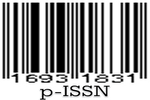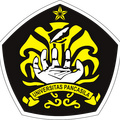Assessment on the antioxidant, photoprotective, and antimicrobial properties of Siraitia grosvenorii
Abstract
Exogenous antioxidants from plant-based sources, such as polyphenols, show potential in maintaining a balance of cellular oxidation in biological systems. Additionally, the rise of antimicrobial resistance and the harmful effects of UV radiation on skin necessitate the exploration of medicinal plants for drug development and photoprotective agents. This study specifically focused on Siraitia grosvenorii or Luo Han Guo, and aimed to assess its phenolic and flavonoid content, as well as its antioxidant, antimicrobial, and photoprotective properties. The study involved the preparation of Siraitia grosvenorii extracts from seeds and fruit peels, determination of total phenolic and flavonoid content using Folin-Ciocalteu reagent and AlCl3, evaluation of antioxidant activity using the DPPH method, and analysis of antimicrobial activity against Escherichia coli using turbidity assays. Photoprotective activity was examined by calculating the Sun Protection Factor (SPF) using a UV spectrophotometer and a normalized function. The results showed that fruit peel of Siraitia grosvenorii had a higher total phenolic content than the seed, and no significant difference in flavonoid content between seed and fruit peel extract. Additionally, Siraitia grosvenorii fruit peel and seed had low SPF value and DPPH reduction. Both fruit peel and seed showed highest antimicrobial activity at the concentration of 100 ppm.
References
[2] D. P. Xu, Y. Li, X. Meng, T. Zhou, Y. Zhou, J. Zheng, J. J. Zhang, and H. B. Li, “Natural antioxidants in foods and medicinal plants: Extraction, assessment and resources,” International Journal of Molecular Sciences, vol. 18, no. 1, pp. 1-32, January 2017.
[3] S. Bendjedid, S. Lekmine, A. Tadjine, R. Djelloul, and C. Bensouici, “Analysis of phytochemical constituents, antibacterial, antioxidant, photoprotective activities and cytotoxic effect of leaves extracts and fractions of Aloe vera,” Biocatalysis and Agricultural Biotechnology, vol. 33, pp. 1-12, May 2021.
[4] R. Stevanato, M. Bertelle, and S. Fabris, “Photoprotective characteristics of natural antioxidant polyphenols,” Regulatory Toxicology and Pharmacology, vol. 69, no. 1, pp. 71–77, March 2014.
[5] M. C. P. P. Reis Mansur, S. G. Leitao, C. Cerqueira-Coutinho, A. B. Vermelho, R. S. Silva, O. A..F. Presgrave, A. A. C.
Leitao, G. G. Leitao, E. Ricci-Junior, and E. P. Santos, “In vitro and in vivo evaluation of efficacy and safety of photoprotective formulations containing antioxidant extracts,” Revista Brasileira de Farmacognosia, vol. 26, no. 2, pp. 251–258, Jan. 2016.
[6] K. Izawa, Y. Amino, M. Kohmura, Y. Ueda, and M. Kuroda, “Human-Environment Interactions-Taste,” in Comprehensive Natural Products II, H. W. Liu and L. Mander, Eds. Elsevier, 2010, pp. 631-671. [Online] Available: ScienceDirect.
[7] H. L. Tan, Y. K. Liang, Y. M. Li, L Y. Qiu , R. Huang , L. Guo, X. H. Yang, H. X. Lu, H. M. Liang, and A. P. Chen, “Effects of Luo Han Guo on throat complications associated with tracheal intubation: a randomized controlled trial,” Journal of International Medical Research, vol. 47, no. 7, pp. 3203–3211, July 2019.
[8] J. S. Jin and J. H. Lee, “Phytochemical and pharmacological aspects of Siraitia grosvenorii, luo han kuo,” Oriental Pharmacy and Experimental Medicine, vol. 12, no. 4, pp. 233-239, December 2012.
[9] J. de S. Mansur, M. N. R. Breder, M. C. d’Ascencao Mansur, and R. D. Azulay, “Determinação do fator de proteção solar por espectrofotometria,” Anais Brasileiros de Dermatologia, vol. 61, no. 3, pp. 121–124, June 1986.
[10] R. M. Sayre, P. P. Agin, G. J. Levee, and E. Maruiwe, “A comparison of in vivo and in vitro testing of sunscreening formulas,” Photochemistry and Photobioology, vol. 29, no. 3, pp. 559-566, March 1979.
[11] J. Kruk, B. H. Aboul-Enein, E. Duchnik, and M. Marchlewicz, “Antioxidative properties of phenolic compounds and their effect on oxidative stress induced by severe physical exercise,” The Journal of Physiological Science, vol. 72, pp. 1-23, August 2022.
[12] N. Wuttisin and W. Boonsook, “Total phenolic, flavonoid contents and antioxidant activity of Siraitia grosvenorii fruits extracts,” Food and Applied Bioscience Journal, vol. 7, no. 3, pp. 131-141, March 2019.
[13] D. M. Kopustinskiene, V. Jakstas, A. Savickas, and J. Bernatoniene, “Flavonoids as anticancer agents,” Nutrients, vol. 12, no. 2, pp. 1-24, February 2020.
[14] J. Sukweenadhi, O. Yunita, F. Setiawan, Kartini, M. T. Siagian, A. P. Danduru, C. Avanti, “Antioxidant activity screening of seven Indonesian herbal extract,” Biodiversitas, vol. 21, no. 5, pp. 2062-2067, May 2020.
[15] N. Wuttisin and W. Boonsook, “Total phenolic, flavonoid contents and antioxidant activity of Siraitia grosvenorii fruits extracts,” Food and Applied Bioscience Journal, vol. 7, pp. 131-141, March 2019.
[16] X. Gong, N. Chen, K. Ren, J. Jia, K. Wei, L. Zhang, Y. Lv, J. Wang, and M. Li, “The fruits of Siraitia grosvenorii: A review of a Chinese food-medicine,”Frontiers in Pharmacology, vol. 10, November 2019.
[17] I. Batubara and M. E. Prastya, “Potential use of Indonesian medicinal plants for cosmetic and oral health: a review,” Jurnal Kimia Valensi, vol. 6, no. 1, pp. 118–132, May 2020.
[18] Food and Drug Administration (FDA), “Sunscreen: How to help protect your skin from the sun a sunscreen message for consumers,” [Online]. Available: https://www.fda.gov/drugs/understanding-over-counter-medicines/sunscreen-how-help-protect-your-skin-sun. [Accessed Dec. 08, 2023].
[19] Z. Yang, H. Wang, G. Qi, G. Chen, C. Cao, and S. Wang, “Antimicrobial effects of a compound solution of three medicine food homology plants,” Food Bioscience, vol. 49, pp. 101845, October 2022.

This work is licensed under a Creative Commons Attribution-NonCommercial-ShareAlike 4.0 International License.
Licencing
All articles in Jurnal Ilmu Kefarmasian Indonesia are an open-access article, distributed under the terms of the Creative Commons Attribution-NonCommercial-ShareAlike 4.0 International License which permits unrestricted non-commercial used, distribution and reproduction in any medium.
This licence applies to Author(s) and Public Reader means that the users mays :
- SHARE:
copy and redistribute the article in any medium or format - ADAPT:
remix, transform, and build upon the article (eg.: to produce a new research work and, possibly, a new publication) - ALIKE:
If you remix, transform, or build upon the article, you must distribute your contributions under the same license as the original. - NO ADDITIONAL RESTRICTIONS:
You may not apply legal terms or technological measures that legally restrict others from doing anything the license permits.
It does however mean that when you use it you must:
- ATTRIBUTION: You must give appropriate credit to both the Author(s) and the journal, provide a link to the license, and indicate if changes were made. You may do so in any reasonable manner, but not in any way that suggests the licensor endorses you or your use.
You may not:
- NONCOMMERCIAL: You may not use the article for commercial purposes.
This work is licensed under a Creative Commons Attribution-NonCommercial-ShareAlike 4.0 International License.





 Tools
Tools





















